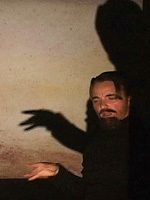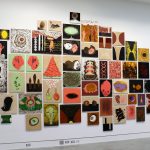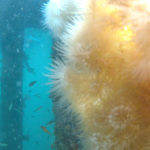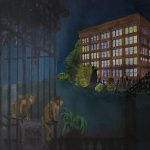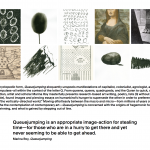Marina Roy
Research Area
Education
MFA (UBC)
BFA (NSCAD)
BA (Laval)
About
In the pile-up of language and spectacle which constitutes our amnesiac present, one role for art is to create a clearing within our petrified landscape, and, through an attentiveness to the potential of matter, through a reordering of all this new and mostly obsolete stuff, through bricolage and play, construct new meanings, new conceptions of reality and becoming, shot through with historical memory and new visions of the future.
Cross-disciplinary in scope, my artwork investigates the intersection between materials, the contemporary, history, language, and ideology. It is my hope that the work addresses the need for a post-humanist perspective, counter to the dictates of anthropocentric hubris and its entrapment within binary power dynamics. Art can act as a bridge between culture and nature, ethics and drive, shedding light on a spectrum of potential states in between – embracing the other. Lately my work has focused on painting, sculpture, and animation. I am interested in how seemingly inert and inanimate matter is made “animate” within art and how this can point to new political-ecological worldviews. I am interested in a grotesque art: how human, animal, plant, mineral, and microbial life coalesce into new hybrid formations, as well as in the creation of new visual (allegorical) languages from which to think. My research focus spans materiality, ecology/natural history, psychoanalysis, feminism, and linguistics.
I have written two books that use the encyclopedic form as conceptual conceit. sign after the x (Artspeak/Arsenal Pulp Press, 2001) is a book which revolves around the letter X and its multiple meanings in Western culture; X is a familiar graphemic signifier for the Real, the Unknown, the Other, and Sex. Queuejumping (Information Office, 2021) revolves around the letter Q and explores such issues as sovereignty, human-animal distinction, biopolitics, natureculture, the Anthropocene/Capitalocene, and biodiversity.
In my teaching, I focus on the full constellation of students’ interests, identity, and practice, offering intense dialogue at the intersection of their subject position, their preferred mediums and materials, and their research interests. My approach to teaching is also informed by art history, contemporary theory, and issues of materiality in art. An informed practice is essential, based not only on innovation and experimentation but also in historical memory: how and why did artists made work the way they did in the past, how do these works still speak to us today, and how and why do we make work the way we do today? We live in accelerated and distracted times. Art provides a space for attentiveness, meditation, thinking, feeling, and a slowing down of time. I am also interested in students exploring different ways of writing within the context of being an artist. How do artists write? What are the possibilities for writing that exists alongside or as central to one’s artistic practice?
- Dirty Clouds. Marina Roy
- Mal de Mer. Marina Roy
- Your Kingdom to Command. Marina Roy
- Apartment. Marina Roy
- Queuejumping. Marina Roy
Teaching
Research
Painting and 2D media
